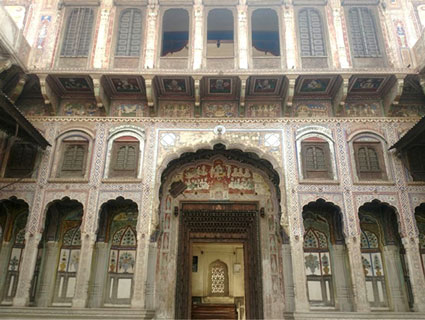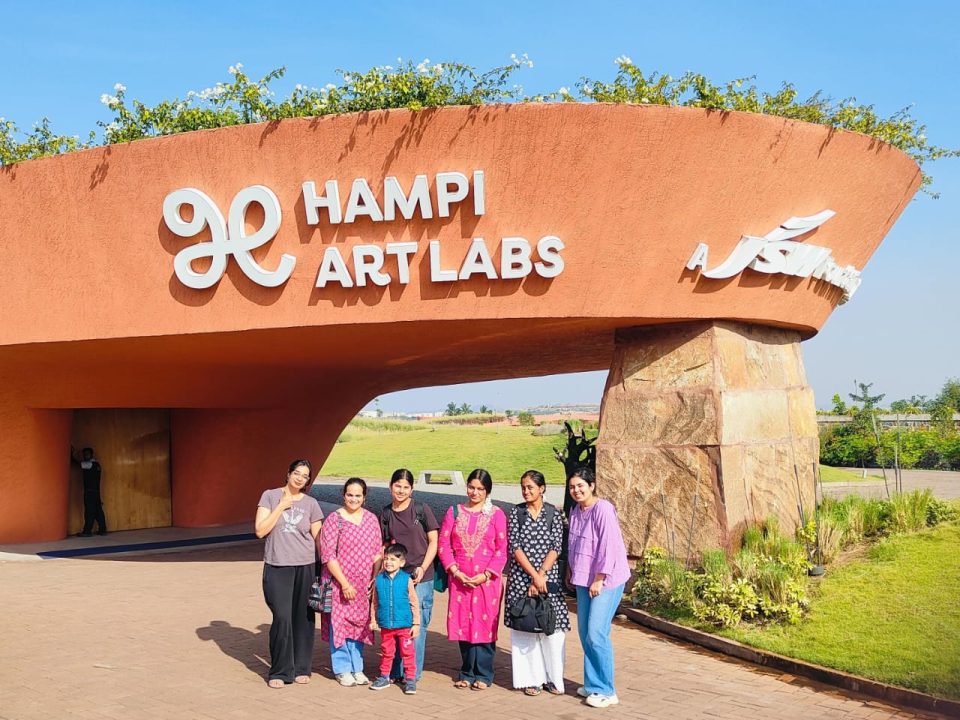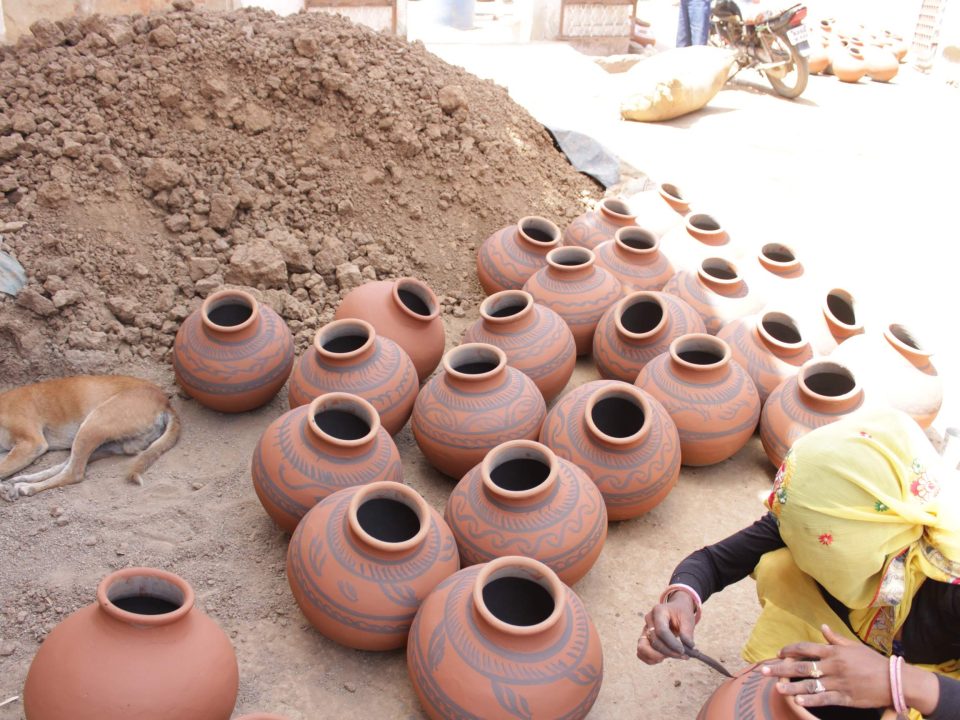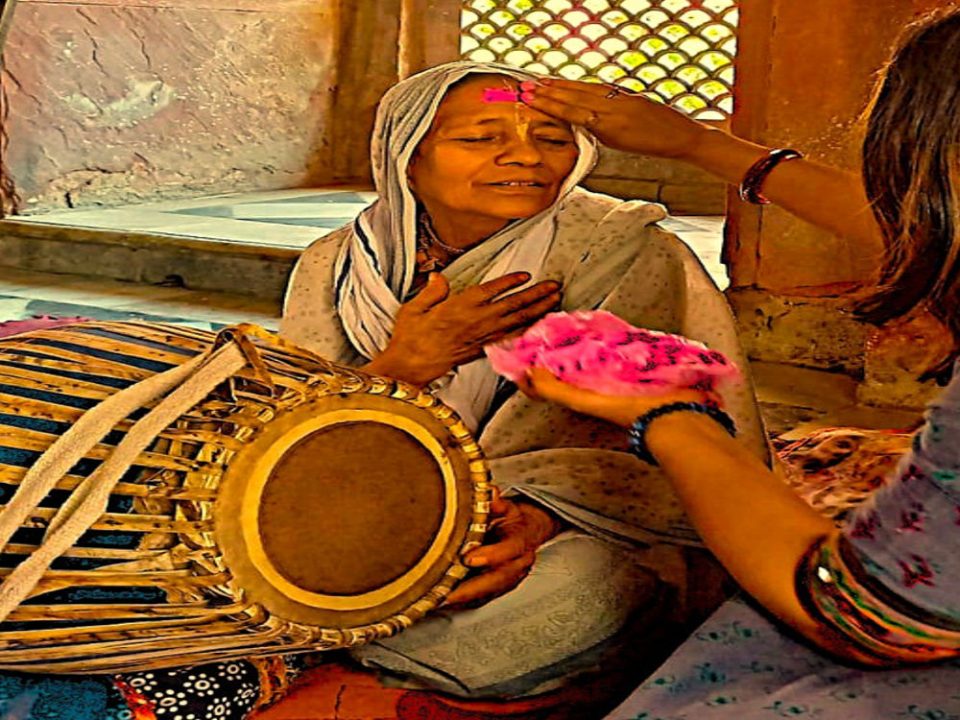Training for conservation of built heritage
Arayish – Training for conservation of built heritage
India’s rich cultural heritage and centuries of evolutionary traditions is manifested by the huge variety of Art, craft, Architecture and cultural objects it possesses. One of the best examples showcasing the cohesive coexistence of these forms can be witnessed in the Shekhawati havelis of Rajasthan. Home to the marwari merchant community, shekhawati was once upon a time a major trade center. These traders in a bid to exhibit their richness commissioned the construction of grand and exquisitely decorated havelis. Fresco paintings are the unique feature of these havelis, depicting the way of life of these traders. These frescos were painted on freshly prepared, wet Arayish base which allowed the natural dyes to grip the base firmly, causing the paintings to last longer.
Arayish also known as Alla-gila or Morakashi is a type of wall finish prepared using wet lime plaster and decorated with murals using natural pigments making it an environmentally friendly method of plastering and painting. Arayish name refers to a polished, glazed or mirror-like surface. This method of plastering was a cheaper supplement of marble as the applications impart a similar smooth and glossy finish to the walls.

Haveli Shekhawati, Rajasthan

Fresco from Shekhawati, Rajasthan
The artists from Jaipur, Rajasthan were known as masters in this skill. Today also we can witness the original work of the craftsmanship on walls of old temples, havelis and heritage monuments. However, this heritage now lies in a dilapidated condition due to lack of maintenance and preservation. Arayish is one of the craft skills which helped in the sustenance of this heritage through centuries. But this craft skill is now languishing as it involves high craftsmanship and is a lengthy and tedious process which is expensive to execute.

There is a need for the skilled craftsman in the building heritage sector to ensure that the authenticity and originality of these historic sites is maintained. For the same a training program was proposed by the National Culture fund & HUDCO to IICD. The program focused on aspects like reviving the traditional techniques, upgrading the existing skills and providing systematic and scientific knowledge of restoration and preservation to ensure skilled manpower in the heritage sector. Among the five techniques shortlisted for the program one was Arayish.
A group of 10 artisans was trained under the expert guidance of Dr. Nathu lal Verma, Master artisan Ram Krishan Kumawat and IICD team in a 30 days training program. The program was implemented by providing both theoretical and practical knowledge to the artisans through Guest lecturers focused on drawing and geometry skills, scientific preservation methods, preparation of raw material, demonstration of technique and practical execution on site.


Preparation of lime paste, base making for arayish and coloring using natural pigments
The thirty day Training Program concluded with a valedictory ceremony, where the participants were given certificates of completion. The ceremony was braced by a small exhibition of the panels, which were developed by the trainees during the program. Participant’s contact details were shared with the Archaeological Survey of India and other conservation departments to ensure future consideration of these artisans for upcoming projects. The training imparted to the artisans will help facilitate better livelihood opportunities for them.

Display of panels at IICD & Onsite execution – at ASI quarters Amber, Rajasthan
-By Shubham Tambi
(Assistant Professor, IICD)





